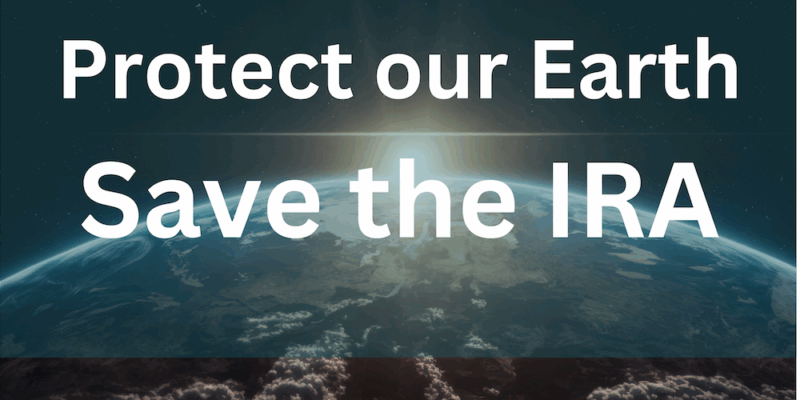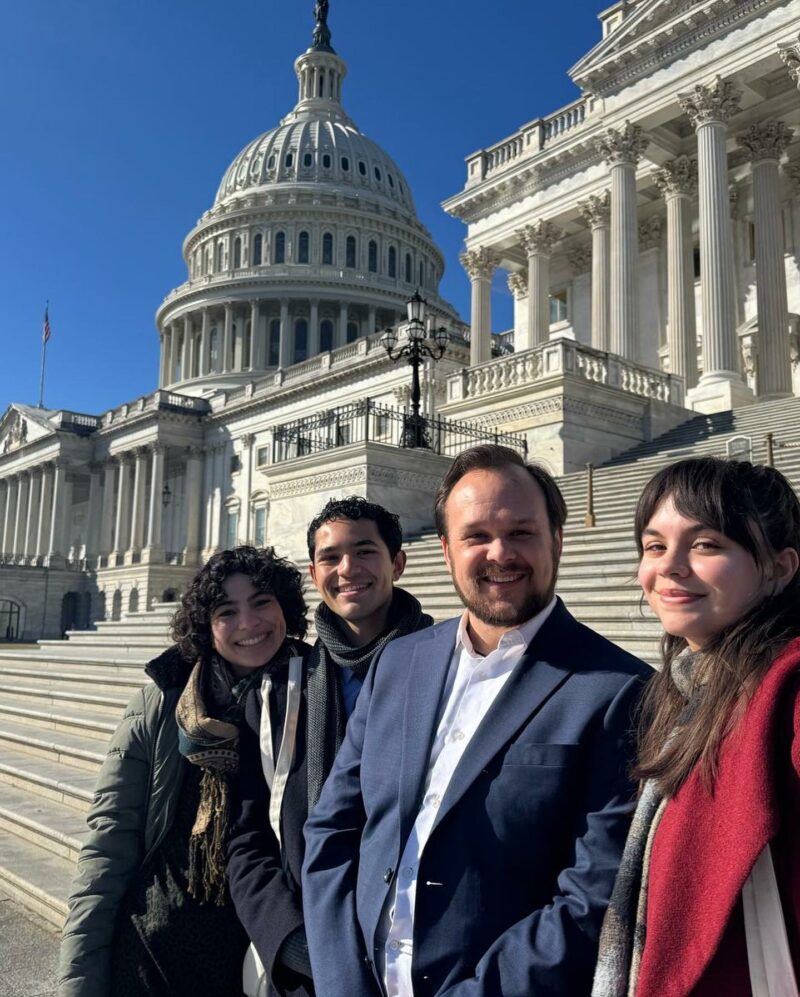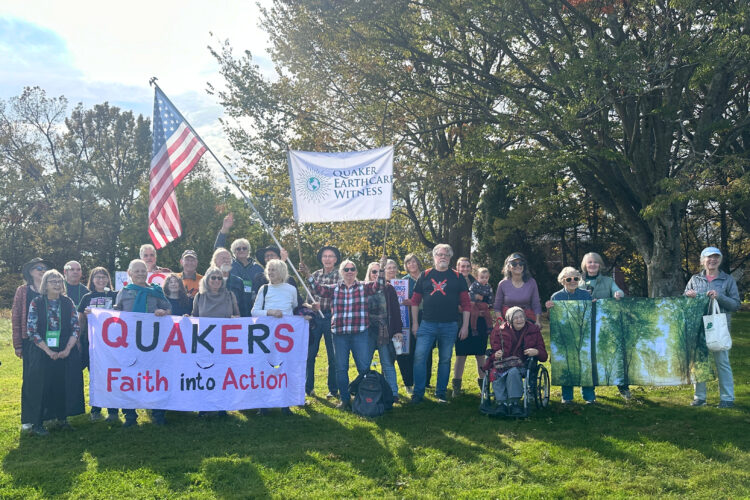QEW Mobilizes to Protect US Climate Law: Reflections on our “Protect Our Earth | Save the IRA” Campaign

Keith Runyan
When Donald Trump won the U.S. presidency, it was clear the political landscape for climate action had shifted. As the new General Secretary of Quaker Earthcare Witness, I felt a responsibility to help mobilize the Quaker community to protect what we could. We had already been preparing for difficult years ahead – considering how Quaker meetings might serve as sanctuaries for migrants and climate refugees, and how they could become hubs of local resilience.
The most promising opportunity emerged in mid-November at the Friends Committee on National Legislation’s annual meeting. Daren Caughron, FCNL’s lead lobbyist on energy and environment, explained that the Biden-era climate tax credits – central to the Inflation Reduction Act – could potentially survive repeal efforts. More than 80% of IRA clean energy investments were flowing into Republican districts, funding wind, solar, geothermal, and grid projects in coal country and rural areas. This was the largest climate law in world history, with the potential to keep gigatons of CO₂ out of the atmosphere.
QEW launched the “Protect Our Earth | Save the IRA” campaign that winter. We built an original database linking every IRA project to its congressional district, which allowed us to target 22 House districts and three key Senate seats in Utah, Arizona, and North Carolina. Volunteer “district leads” were recruited to coordinate local actions and report back weekly. By March 2025, more than a dozen district leads had signed on.
From March through June, we hosted monthly Action Hours that combined spiritual grounding, policy updates, and live advocacy pushes. Participants logged phone calls and emails to representatives in real time. QEW also developed call scripts, letter-writing guides, and district-specific fact sheets. Given the political climate, our messaging emphasized fairness, jobs, and the fact that the overwhelming majority of IRA projects were located in Republican areas.

Through an email letter-writing sign-up system, we engaged 371 Quaker meetings and allied organizations in critical districts, many of which committed to contacting lawmakers. Personalized letters went to 57 monthly meetings in targeted districts. Our systems logged 177 unique phone calls and 1,106 unique emails to members of Congress, with another 180 calls estimated during Action Hours. Many actions taken likely evaded our systems.
QEW staff also traveled to Washington in February 2025 for meetings with congressional offices and to speak on an FCNL panel. District-level teams met with staffers for Rep. Kevin Kiley (CA-03), Rep. Jen Kiggans (VA-02), and Rep. Juan Ciscomani (AZ-06). In Iowa, a district lead published an op-ed urging Rep. Mariannette Miller-Meeks to oppose repeal. Partnerships with FCNL, Environmental Voter Project, Climate Power, and local environmental justice groups strengthened our reach.
The repeal effort, wrapped into what was called the “One Big Beautiful Bill Act,” did pass. But not everything was lost. Our coalition’s advocacy won the following three concessions:
The removal of a 60-day “commence construction” cliff that would have killed most new wind and solar projects. Instead, projects retained the standard window to begin construction.
Preservation of credit transferability, allowing towns, tribes, schools, and nonprofits to continue monetizing credits.
A delayed phase-down of wind and solar production and investment credits, beginning in 2026 rather than immediately.
In the end, in the words of Citizen’s Climate Lobby the final bill was “25% less damaging” than the one initially passed by the House. Though we could not stop the repeal of home solar and EV incentives nor the elimination of environmental-justice and ecological restoration programs, still, the changes we fought for preserved two years of critical funding for the U.S. energy transition to take place.

This campaign underscored that grassroots advocacy can make a difference even on defense. We did not stop the bill, but we did shape its final form. The two-year reprieve means projects can break ground, networks can deepen, and the next generation of organizers can prepare for the work ahead.
Finally, the campaign showed the importance of spiritual grounding. Many participants said that starting with worship gave them the courage to keep calling and writing, even when the odds looked bleak. That combination of faith and persistence is something QEW can continue to offer uniquely in climate justice work.
The reconciliation bill and Trump policies are an existential assault on our environment and represent a major setback for U.S. climate policy. But the “Protect Our Earth | Save the IRA” campaign showed that with clear strategy, broad partnerships, and faithful persistence, Friends can play a meaningful role in shaping outcomes. The fight for climate justice is far from over, and the experience gained through this campaign will be essential for the future of QEW and Quaker environmentalism.

